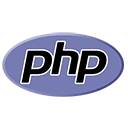Event-Driven Architecture (EDA) is a powerful approach to building scalable and loosely coupled systems. In this guide, we'll explore how to implement Event-Driven Architecture in PHP, including sample code and best practices:
1. Introduction to Event-Driven Architecture
EDA is a design pattern where components communicate with each other by producing and consuming events. It enables decoupling of different parts of a system, making it more flexible and extensible.
2. Event Publishing
In EDA, events are at the core. Events are messages that indicate something has happened in the system. You can use a message broker like RabbitMQ or Apache Kafka to publish events. Here's an example of publishing an event in PHP:
// Create an event
$event = new MyEvent('event_data');
// Publish the event
$message = serialize($event);
$messageBroker->publish('event_topic', $message);
3. Event Subscribers
Event subscribers are responsible for consuming and reacting to events. These subscribers can be separate components or services. In PHP, you can create event listeners using a framework like Symfony's EventDispatcher:
// Define an event listener
class MyEventListener {
public function onEvent(MyEvent $event) {
// Handle the event
}
}
// Register the event listener
$dispatcher->addListener('event_name', [new MyEventListener(), 'onEvent']);
4. Event Handling
When an event is consumed, the corresponding event listener handles it. This is where you put the logic to respond to the event. You can execute code, update the database, or trigger further events based on the initial event.
// Handle the event
public function onEvent(MyEvent $event) {
$data = $event->getData();
// Process the data
}
5. Asynchronous Event Processing
EDA often involves asynchronous processing. Message brokers allow events to be processed independently and in parallel. This is especially useful for handling high volumes of events or time-consuming tasks.
6. Event Sourcing
Event Sourcing is a related concept where you store changes to the system's state as a sequence of events. This allows you to reconstruct the state of the system at any point in time. PHP frameworks like Laravel and packages like Broadway provide support for Event Sourcing.
7. Benefits of Event-Driven Architecture
EDA offers several advantages, including scalability, loose coupling, and the ability to handle complex workflows and business processes. It is widely used in microservices and distributed systems.
8. Conclusion
Implementing Event-Driven Architecture in PHP can lead to more flexible, scalable, and maintainable applications. By publishing events, creating event listeners, and handling events asynchronously, you can design systems that respond dynamically to changes and events in the environment.

